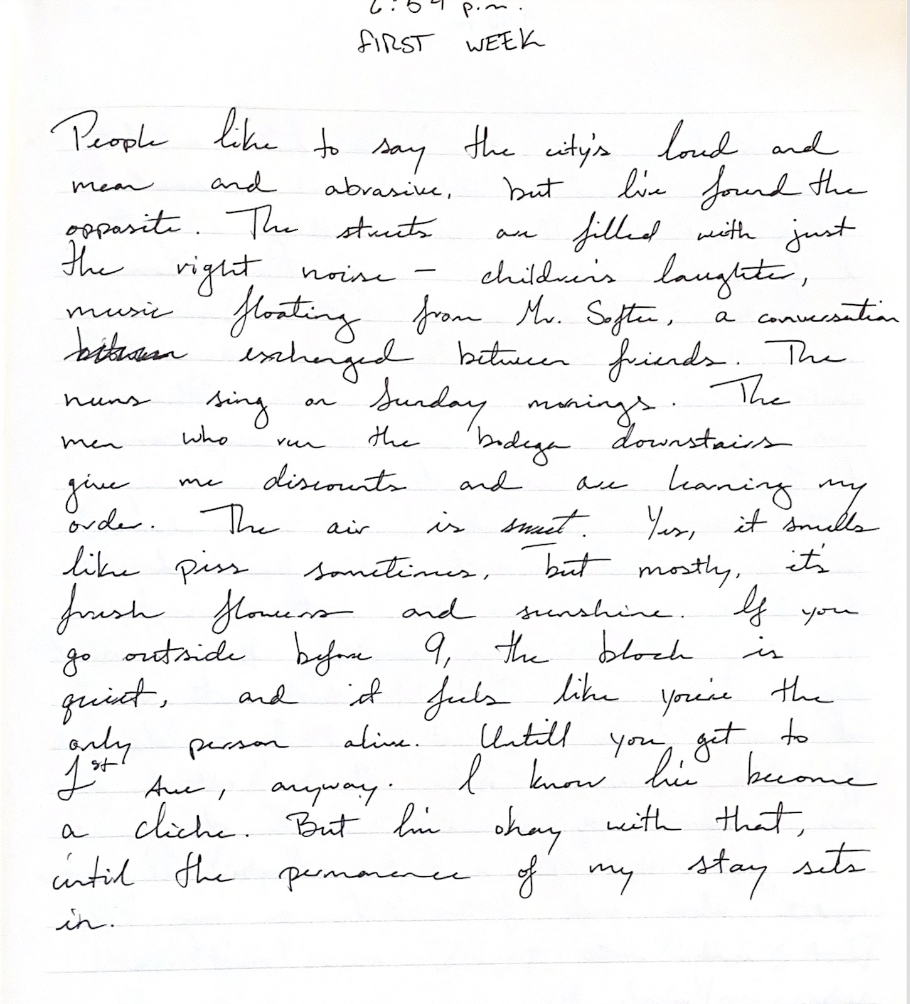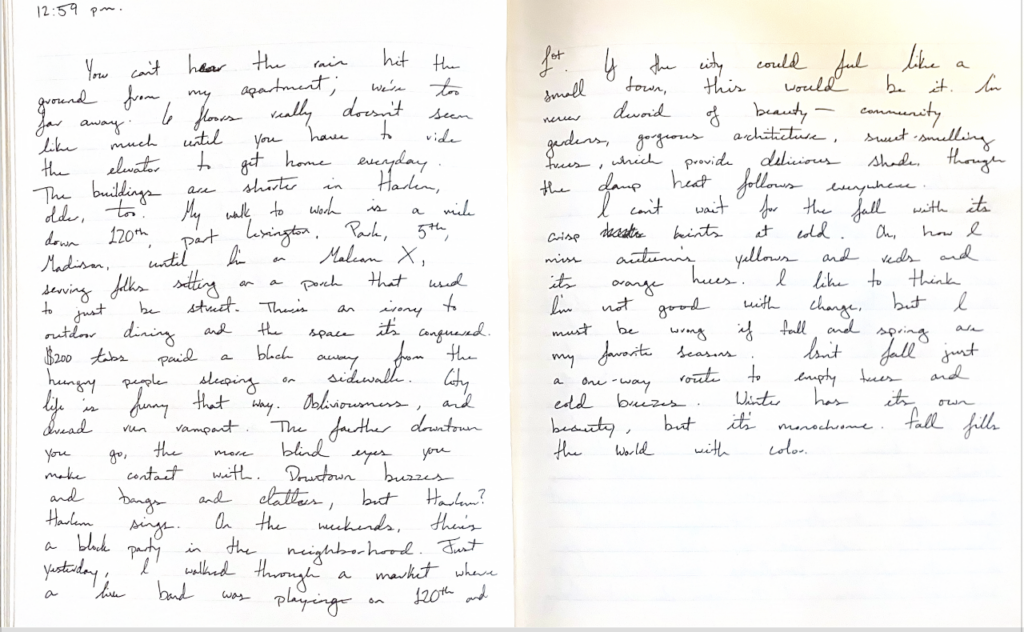I can’t hear the rain hit the ground from my apartment; we’re too far away. Six floors doesn’t feel like much until you ride the elevator on your daily commute. We live on the top floor — the buildings are shorter in Harlem. Older, too. When I stand on my fire escape, I’m invisible to the world; one has to crane their neck skyward to see me.
El Barrio has been an ethnically diverse enclave of Manhattan since it has existed. The streets are thick with the history of the oppressed. From Italians to Puerto Ricans, Manhattan’s upper east-most margin has been a haven for the marginalized for centuries. This shared trait didn’t always unite, and the neighborhood was home to racial clashes for ages. People say the neighborhood’s been straightened out, made safer, in recent decades. They’re technically right; the cops who survey the block ensure no one steps out of line.
I’m one of the only whities in my building, let alone the neighborhood. I’m a minority for the first time in my life. It gets self-conscious, although I have nothing to complain about. No one treats me poorly, or differently. As long as you’re polite and quick in everything you do, no one bats an eye. I wonder if they think I’m Jewish, or care that I’m here at all.
I don’t know what it’s like to actually be a minority, of course — I am not systematically oppressed. My life is riddled with privilege. I’m not from a neighborhood that’s history is stained with blood and rooted in refuge. I’m from San Diego.
So, I guess I am, I’ve just never had to think about it. I suppose those field trips to the missions didn’t make the right mark.
But all histories are stained with blood, are they not? It just depends whose blood it is. Spanish or native or black, it all runs the same color. History is burgundy throughout.
The city gets whiter and richer and taller as you descend the east side — I’m sure the same thing is true of the west, but I don’t spend enough time on that side of the island. Downtown buzzes and bangs and clatters, but Harlem? Harlem sings.
People say the city is loud and angry and abrasive, but I prefer to say energetic and strong-willed. El Barrio is filled with just the right kinds of noise — children’s laughter, a conversation between old friends, basketballs kissing pavement, music floating up from Mr. Softee.
I’m never devoid of beauty. You can find some, anywhere and everywhere. I like to go to the library, with its expansive wooden tables, chandeliers, hand-painted ceilings, and pretend I have something to study for, although the thought of graduate school has become my nightmare. Personal projects are valid, I tell myself, as the person to my left leafs through the biggest book I’ve ever seen.
The light transforms mundanity to divinity. Even the glasses in the cabinet look beautiful as they’re greeted by the evening sun. Even the filthiest subway stations are filled with art — colorful tiles line the walls, jazz bounces off concrete. Community gardens hugged by beautiful buildings; streets filled with sweet-smelling trees, which provide delicious shade, though the damp heat is nearly inescapable. After three weeks without air conditioning, I’ve gotten used to sweating almost constantly.
I can’t wait for the fall with its crisp hints at cold, its yellows and reds and orange hues. I generally struggle with change, except when it comes to the seasons, of which, fall is my favorite. The physical representation of time’s passage, seasons counting down to something still out of sight, in groups of fours, year after year. Change is easier when made consistent.

Isn’t fall just a one-way route to naked trees and frigid breezes and frozen sidewalk? Winter’s beauty is monochrome, but autumn is technicolor. The leaves started falling last week. Oh, how I miss sweaters and turtlenecks and corduroy and the smell of heat as it escapes the vents. But for now, I’m stuck with muggy, hot air that the water and sun and car engines conspire to create.

